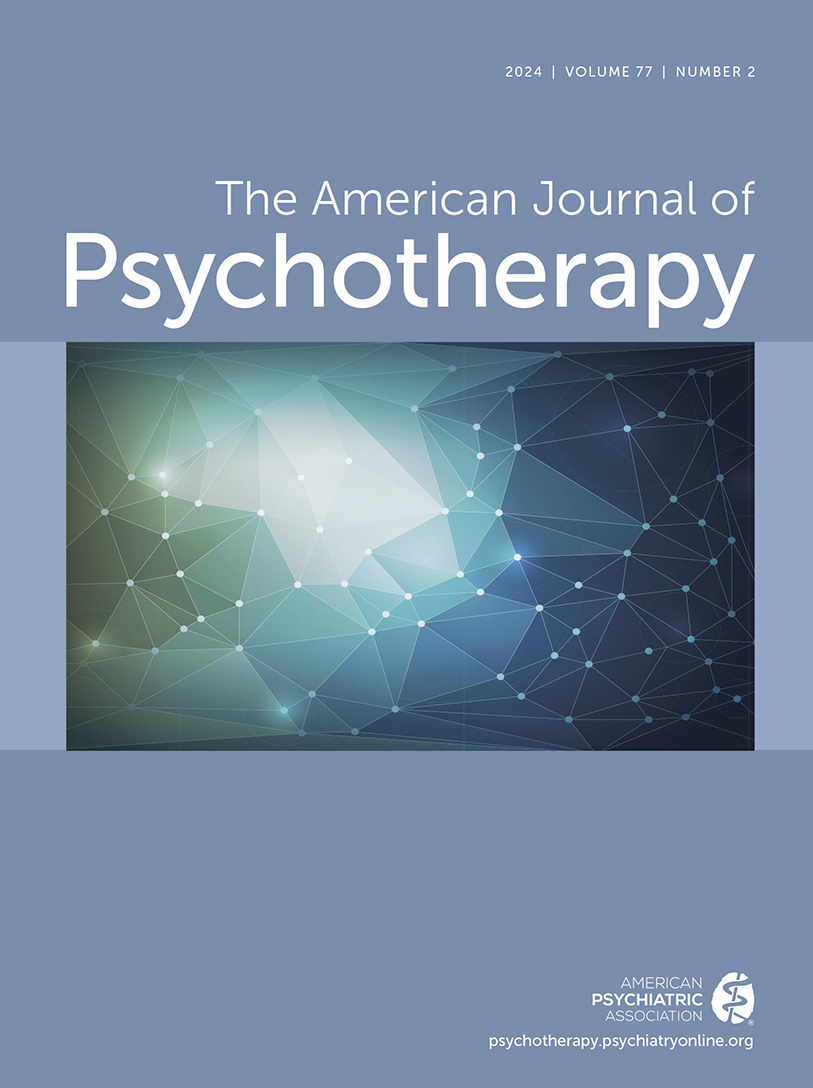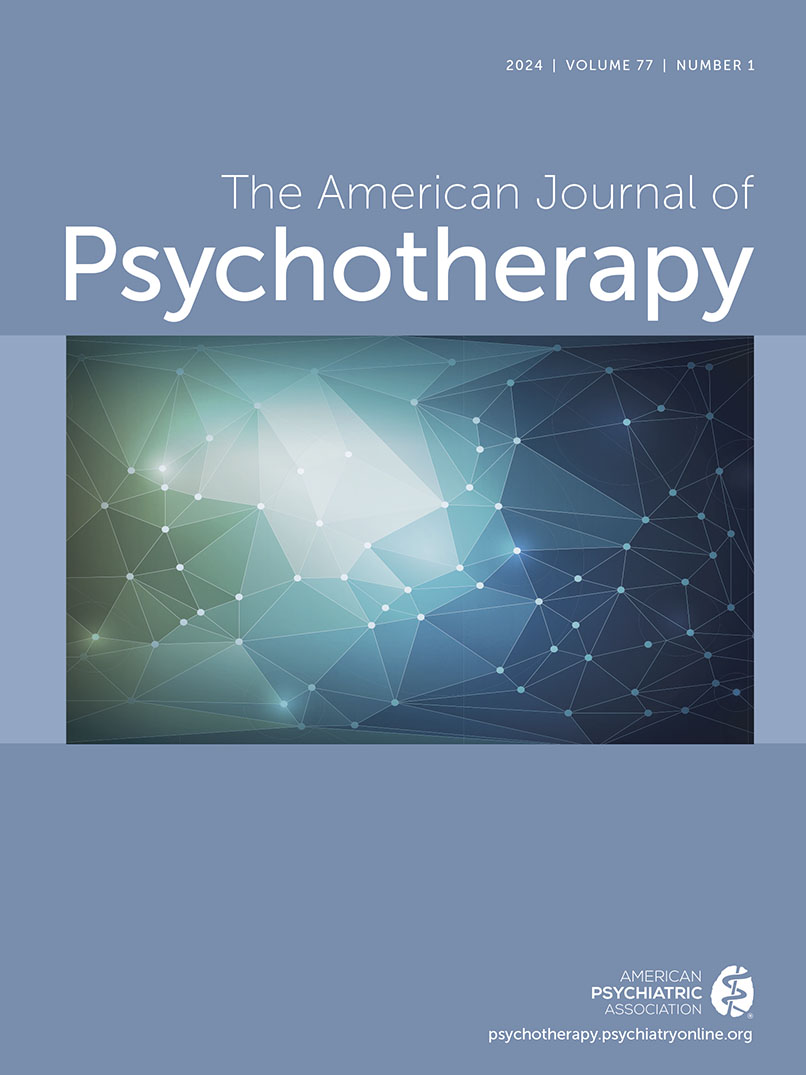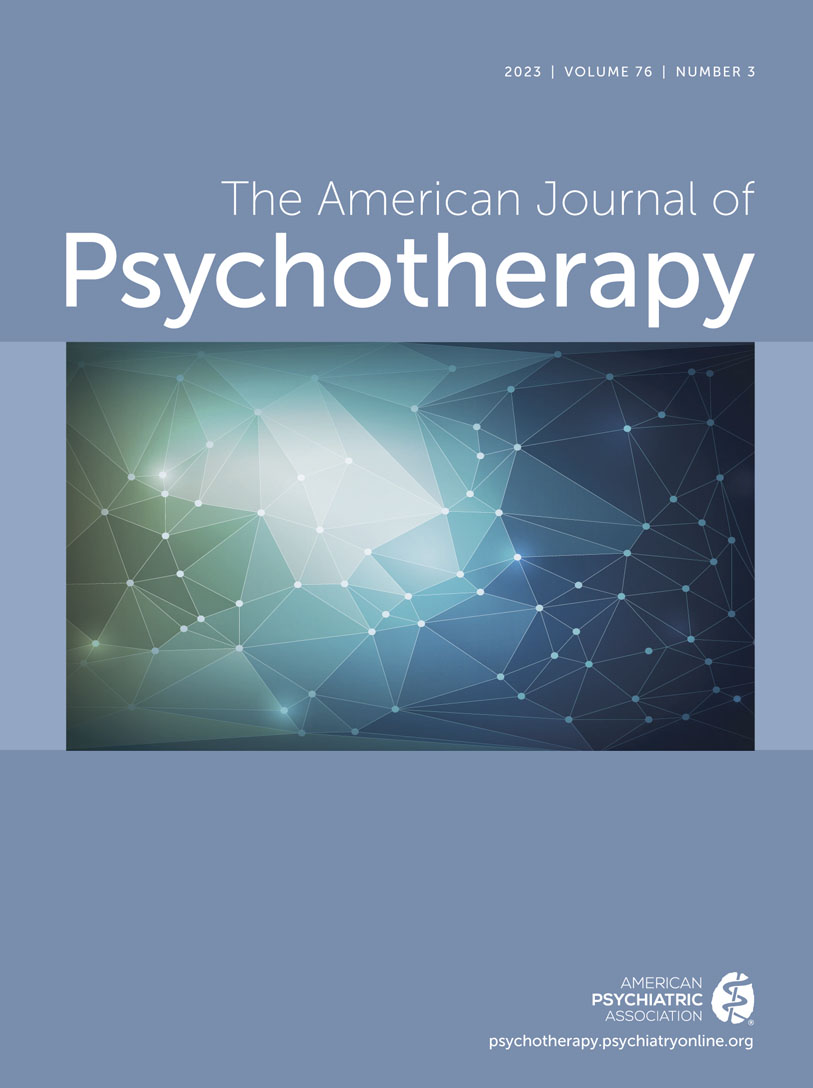American Journal of Psychotherapy
- Volume 56
- Number 2
- April 2002
Articles
Publication date: 01 April 2002
Pages149–166The authors begin by examining the intrapsychic implications that HIV/AIDS presents after knowledge of infection. Using examples drawn from two cases, they explore how knowledge of infection precipitates an insidious traumatizing process that comprises a ...
https://doi.org/10.1176/appi.psychotherapy.2002.56.2.149Publication date: 01 April 2002
Pages167–177The treatment of hypochondriasis continues to be challenging because of the nature of hypochondriasis and reactions that it often elicits in therapists. In this paper, it is argued that due to complex interactions between hypochondriacal patients and ...
https://doi.org/10.1176/appi.psychotherapy.2002.56.2.167Publication date: 01 April 2002
Pages178–193In my work with destructive clients, I have found suspect the notion that our deepest fear is that we are malevolent. By use of intuitive insights about the nature of confession in the writings of three literary psychologists—Edgar Allan Poe, Leo Tolstoy, ...
https://doi.org/10.1176/appi.psychotherapy.2002.56.2.178Publication date: 01 April 2002
Pages194–210PTSD and addiction are a marriage made in the avoidance of unbearable affect; an avoidance that is costly in the resulting traumatic reenactments experienced by patients whose attempts to escape the past keep them evermore tightly bound to it. Rather than ...
https://doi.org/10.1176/appi.psychotherapy.2002.56.2.194Complementary Dreams: A Window to the Subconscious Processes of Countertransference and Subjectivity
Publication date: 01 April 2002
Pages211–224The British psychoanalysts were the first to be interested in reciprocal and interpersonal interactions of psychotherapy. The Freudian mirror model was progressively questioned in the 1940s and 1950s. Throughout the 1950s, positions and terms were created ...
https://doi.org/10.1176/appi.psychotherapy.2002.56.2.211Publication date: 01 April 2002
Pages225–232Objective: To assess the cost and clinical effectiveness of psychiatrist-provided Intensive Short-term Dynamic Psychotherapy (ISTDP) of patients referred to a private office. Methods: ISTDP was provided to 89 patients referred to a private psychiatric ...
https://doi.org/10.1176/appi.psychotherapy.2002.56.2.225Publication date: 01 April 2002
Pages233–243The present study utilized an empirically derived coding system to identify content categories in the spontaneous verbalizations of social phobics in the context of a short-term cognitive-behavioral group therapy. The coding system was applied ...
https://doi.org/10.1176/appi.psychotherapy.2002.56.2.233Publication date: 01 April 2002
Pages244–259Although the mental health professions are effective in ameliorating personal distress, treatment can sometimes have negative consequences. The authors explore causal mechanisms for iatrogenic symptoms in therapy by discussing the processes by which ...
https://doi.org/10.1176/appi.psychotherapy.2002.56.2.244Publication date: 01 April 2002
Pages262–273In recent years, the role of psychotherapy in the treatment of children with pervasive developmental disorders, such as autism and Asperger’s Syndrome, has been questioned. Advances in neuropsychiatry, neuropsychology, and genetics, as well as the ...
https://doi.org/10.1176/appi.psychotherapy.2002.56.2.262Book Review
Past Issues
View Issues Archive
Vol. 77 | No. 2

Vol. 77 | No. 1

Vol. 76 | No. 4
